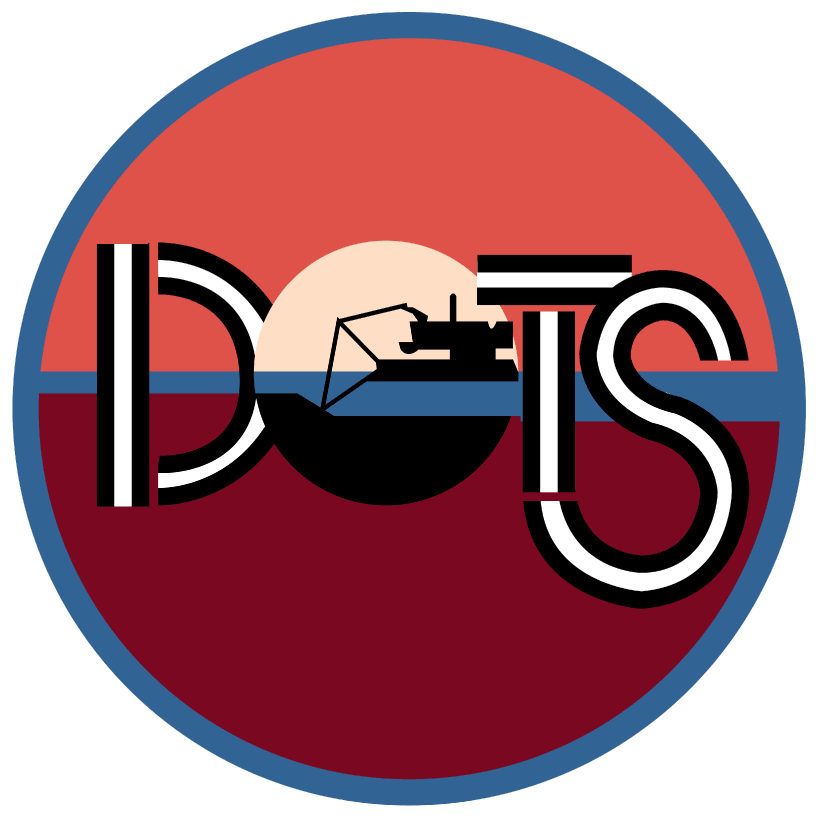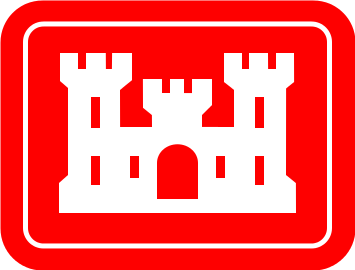Location and date

Knowledge Core: ERDC's Digital Repository
Knowledge Core is a service of ERDC's Information Science and Knowledge Management Branch that collects, preserves and distributes the ERDC's research publications and historical knowledge. The growing collection includes technical reports, technical notes, papers, photographs, and videos.
At Knowledge Core, find publication collections for ERDC’s past and current dredging research programs. You will be redirected to the ERDC Knowledge Core Federally Sponsored Research Programs page from the above link. Each of the programs listed below can be found there.
Dredging Operations Technical Support Program (DOTS): 1978-present
The DOTS program provides environmental and engineering technical support to the USACE Operations and Maintenance navigation and dredging missions. Technology transfer products and activities support diverse field needs that directly benefit navigation and dredging operations throughout the United States.
Dredging Operations and Environmental Research (DOER): 1998-present
The DOER program supports the USACE Operation and Maintenance Navigation Program. Research is designed to balance operational and environmental initiatives and to meet complex economic, engineering, and environmental challenges of dredging and disposal in support of the navigation mission. Research results will provide dredging project managers with knowledge and technology for cost-effective operation, evaluation or risks associated with management alternatives, and environmental compliance.
Engineering With Nature Initiative (EWN): 2010-present
The EWN initiative is the intentional alignment of natural and engineering processes to efficiently and sustainably deliver economic, environmental, and social benefits through collaborative processes.
Dredged Material Research Program (DMRP): 1970-1978
This DMRP was the first major research effort of the USACE addressing dredged material placement. The objectives of the DMRP were to provide information on the effects of dredging and dredged material disposal in all environmental situations and to develop technically satisfactory, economically compatible, and environmentally feasible dredging and disposal alternatives, including consideration of dredged material as a manageable resource.
Dredging Research Program (DRP): 1978-1996
This program supported the USACE Operations and Maintenance navigation and dredging missions. Research was focused in five technical areas: 1) Analysis of dredged material placed in open waters; 2) Material properties related to navigation and dredging; 3) Dredge plant equipment and systems processes; 4) Vessel positioning, survey controls, and dredge monitoring systems; and 5) Management of dredging projects.
Long-Term Effects of Dredging Operations (LEDO): 1980-2002
The research program was initiated by Congress in 1980 because of concern about the long-term environmental consequences of dredged material disposal. The LEDO program was designed to develop new or improved state-of-the-art technology for predicting long-term environmental impacts of dredging operations and to improve and develop methods for minimizing any adverse impacts associated with dredged material placement.
Environmental Effects of Dredging Program (EEDP): 1983-xxxx
The purpose of the EEDP is to plan, coordinate, and/or manage major activities and programs at ERDC related to dredging and dredged material disposal.
Field Verification Program (FVP): 1982-1987 (this site is located at USACE New England DAMOS site)
A joint effort between the U.S. Army Corps of Engineers and the U.S. Environmental Protection Agency designed to verify the results of existing and future laboratory testing protocols through in-situ field measurements. A second objective of the program was a comparison of the environmental effects resulting from open water disposal with those generated by wetland or upland disposal operations.
Other Federally Sponsored Research Programs Reports
A list of federally sponsored research programs curated by ERDC Knowledge Core.
Other USACE Publication and Data Resources
Official Publications of the Headquarters USACE
This collection of publications is the single official repository for official U.S. Army Corps of Engineers (USACE) Engineering Regulations (ERs), Engineering Circulars (ECs), Engineering Manuals (EMs) and other official public documents originating from Headquarters USACE.
Disposal Area Monitoring System (DAMOS)
The DAMOS is a program started in 1977 by the USACE New England District to manage and monitor offshore dredged material disposal sites from Long Island Sound to Maine. DAMOS is managed by the Environmental Resources Section of the Engineering / Planning Division. Program information is shared with the scientific community and public through media such as technical reports, papers, and brochures.
Joint Airborne Lidar Bathymetry Technical Center of Expertise (JALBTCX)
The mission of the JALBTCX is to perform operations, research, and development in airborne lidar bathymetry and complementary technologies to support the coastal mapping and charting requirements of the US Army Corps of Engineers (USACE), the US Naval Meteorology and Oceanography Command, the National Oceanic and Atmospheric Administration (NOAA), and the U.S. Geologic Survey (USGS).
Institute for Water Resources (IWR) Dredging Information System
The Institute is the USACE center of expertise for integrated water resources management, focusing on planning analysis and hydrologic engineering and on the collection, management and dissemination of Civil Works and navigation information, including the nation’s waterborne commerce data. It also serves as the USACE center of expertise for collaborative planning and environmental conflict resolution.
National Dredging Quality Management Program (DQM)
The DQM Program is a Corps-Dredging Industry partnership for automated monitoring of dredge activities to provide quality near-real-time data for Corps dredging projects. On-board sensors continually monitor dredge activities and the data is routed to the DQM Center for processing, storage and publishing. The DQM web-based tools can be utilized to view project operations, produce disposal plots, and export dredge data for better understanding and oversight of dredge operations.
Navigation Gateway
Navigation statements of need, dredging contracts, navigation strategic vision, and other useful links to dredging information.
Navigation Portal
USACE staff collect, store, visualize, analyze, and distribute huge amounts of navigation-related data. The Navigation Data Integration Framework (NDIF), which forms the basis of this Navigation Portal, is an effort to establish a detailed methodology to link data and tools across the Navigation Business line and make them easily available to our stakeholders.
Operations and Dredging Endangered Species System (ODESS)
A data collection and decision making tool is needed to measure impacts of hopper dredging activities to threatened or endangered (TES) and to assist other agencies in the evaluation of this data. In response to this need, USACE developed the ODESS. The ODESS provides a platform to centralize and archive data regarding TES from dredging activities for long-term continuity and evaluation of these data.
Regional Sediment Management (RSM)
A systems approach using best management practices for more efficient and effective use of sediments in coastal, estuarine, and inland environments = Healthy Systems.
Department of Defense Dredging and Navigation Publication Resources
The Defense Technical Information Center (DTIC)
The DTIC is the repository for research and engineering information for the United States Department of Defense. Many of the same dredge related research reports found in ERDC’s Knowledge Core digital library are also found in the DTIC library. In some cases the DTIC library is more extensive.
Other Dredging and Navigation Resources
The World Organization of Dredging Associations (WODA)
WODA is an independent, non-profit, professional organization. It is composed of three separate, autonomous sister dredging associations, with separate corporate structures. Browse the dredging associations technical papers and presentations focused on the fields related to dredging, navigation, marine engineering, and construction.
Western Dredging Association (WEDA)
The WEDA region covers North, Central, and South America.
Central Dredging Association (CEDA)
The CEDA region covers Europe, Africa, and the Middle-East.
Eastern Dredging Association (EADA)
The EADA serves Asia, Australia, and the Pacific Region.
International Association of Dredging Companies (IADC)
IADC is the global umbrella organization for contractors in the private dredging industry. Read the latest issues of Terra et Aqua featuring articles covering dredging projects as well as the topics of safety, socio-economics, technical innovations, and the environment.
The Dredging Contractors of America (DCA)
DCA is a non-profit trade association that has represented the interests of the U.S. dredging and marine construction industry and its members for over 30 years.
National Waterways Conference
The mission of the National Waterways Conference is to effect common sense policies and programs, recognizing the public value of our Nation’s water resources and their contribution to public safety, a competitive economy, national security, environmental quality and energy conservation.


